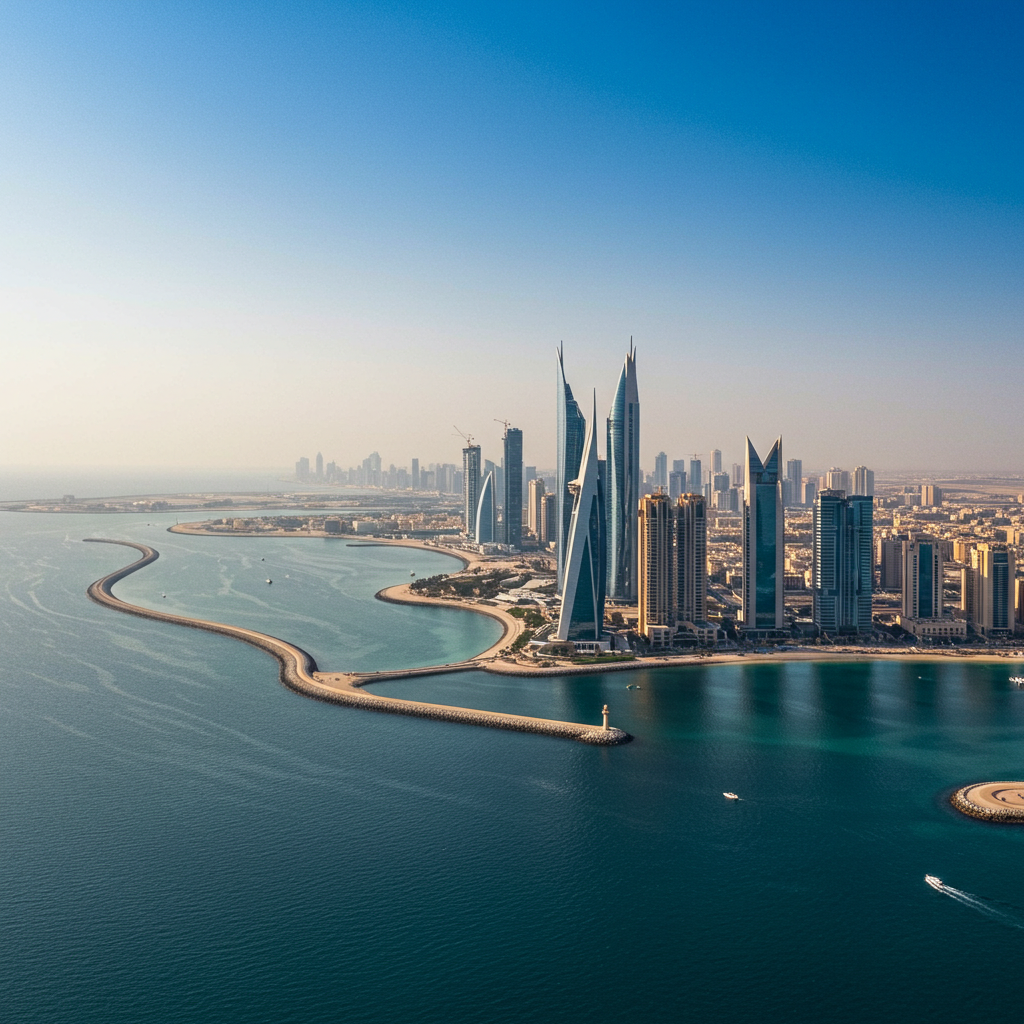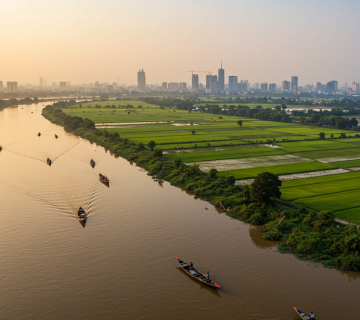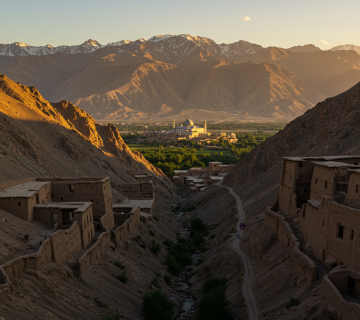:
The Geographical Position and Regional Role of Bahrain: A Small Island with Great Influence
From small islands to major bridges: How Bahrain became the beating heart of regional trade and politics
In the heart of the Persian Gulf, where turquoise waters meet sandy shores, Bahrain shines like a small yet radiant gem. Its geography has not only shaped its cultural and historical identity but also propelled the nation onto the stage of regional politics and global economics. From ancient times, when the islands served as trading hubs, to the modern era, with Manama emerging as a financial capital of the Middle East, Bahrain’s story is deeply intertwined with its strategic location.
Natural Geography and Climate
Bahrain consists of more than 30 islands covering less than 800 square kilometers. Its hot, humid climate with long summers and short winters has had a direct impact on daily life. The scarcity of freshwater, shallow soils, and limited farmland have posed persistent challenges. On the other hand, modest oil and gas reserves combined with excellent maritime positioning have created unique opportunities for the development of related industries.
Historical Significance of Location
For millennia, Bahrain has connected Mesopotamia and the Indian subcontinent. Archaeological discoveries reveal that the Dilmun civilization made the islands a center of pearl trading and luxury goods. During the Islamic era, Bahrain’s position along shipping routes between Basra, Hormuz, and Bombay gave it exceptional importance. In more recent centuries, colonial powers such as Portugal and Britain sought control of these islands to dominate Gulf trade routes.
Economic Importance
Proximity to major shipping lanes and vast Gulf energy reserves has made Bahrain a hub for trade and investment. Advanced ports and free trade zones provide seamless access to regional and international markets. Furthermore, Manama’s thriving financial sector has attracted global investors, benefiting directly from the nation’s strategic location.
Political and Security Dimensions
Situated among regional powerhouses like Saudi Arabia, Iran, and the UAE, Bahrain occupies a sensitive role in Gulf security. The presence of international military bases and strong partnerships with Western powers demonstrate that its geographical advantage serves not only economic growth but also political influence and national security.
Infrastructure and Connectivity
The King Fahd Causeway linking Bahrain to Saudi Arabia is a symbol of transforming geography into strategic infrastructure. Alongside this, Bahrain International Airport and major ports such as Khalifa bin Salman Port serve as vital arteries connecting Bahrain to the global economy. These facilities not only boost trade but also help attract tourists and investors.
Challenges and Opportunities
Despite its strengths, Bahrain faces environmental threats from climate change and rising sea levels. Regional geopolitical rivalries can also impact its stability. Nevertheless, expanding renewable energy, fostering regional cooperation, and investing in a knowledge-based economy present promising opportunities for sustainable growth.
Conclusion
Bahrain’s geographical position has been a defining factor in its history, economy, and politics. Today, with advanced infrastructure and forward-looking economic strategies, Bahrain strives to turn potential threats into opportunities and secure its role as the beating heart of the Persian Gulf.





No comment